QUESTIONS
QUESTIONS 1–5 Pertain to Figures 11-1 to 11-6.



FIGURE 11-3 From Tasman W, Jaeger E. The Wills Eye Hospital Atlas of Clinical Ophthalmology. Second Edition. Lippincott Williams & Wilkins, 2001.
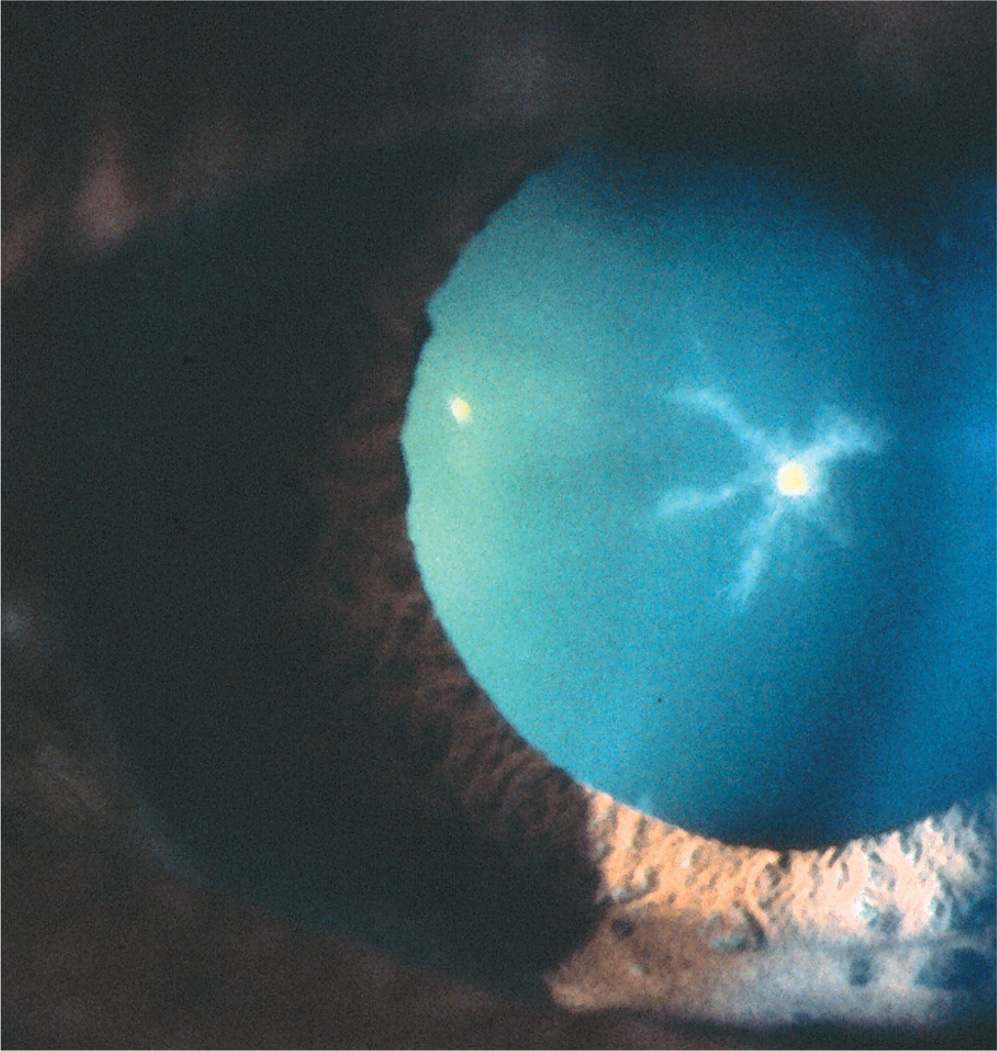
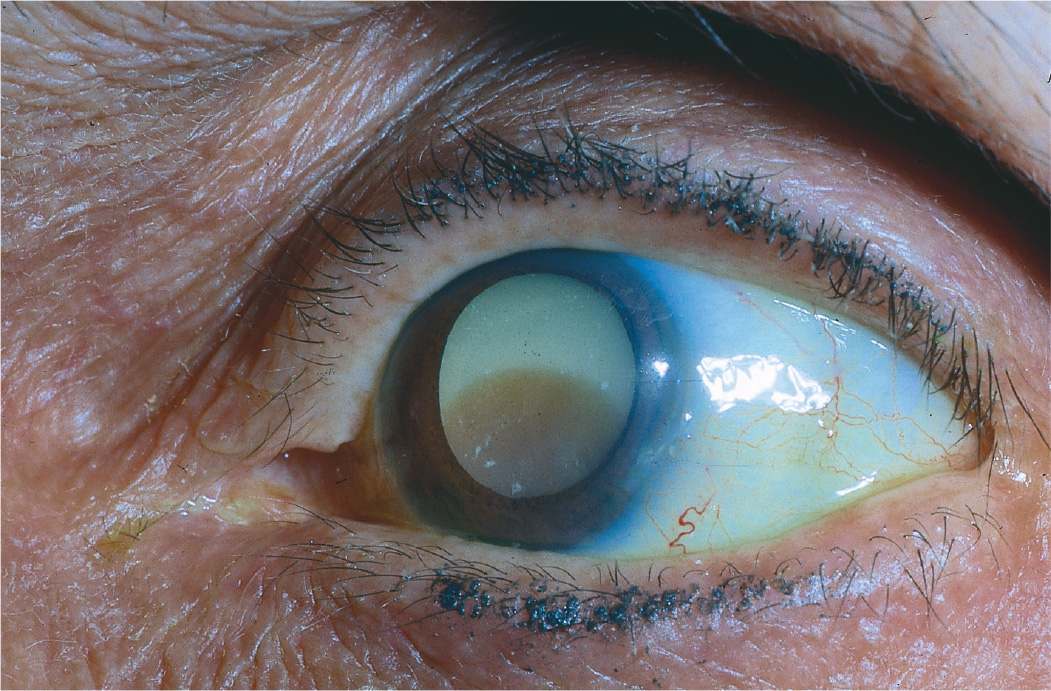

1 Which cataract is associated with the long-term use of amiodarone?
A) Figure 11-1
B) Figure 11-2
C) Figure 11-3
D) Figure 11-4
2 Which can be found in a patient with deafness and hemorrhagic nephritis?
A) Figure 11-5
B) Figure 11-2
C) Figure 11-4
D) Figure 11-3
3 A patient has the cataract pictured in Figure 11-2. Which is a true statement about this patient?
A) A Vossius ring can be found on the anterior lens capsule.
B) The patient may have elevated intraocular pressure (IOP).
C) Patients may also have involvement of their liver and brain.
D) The cataract is usually visually significant.
4 What additional finding would not be seen in the patient with the cataract displayed in Figure 11-6?
A) Temporal bossing
B) Muscle weakness
C) Angle-closure glaucoma
D) Mental retardation
5 Which cataract might be found during a newborn’s examination?
A) Figure 11-4
B) Figure 11-2
C) Figure 11-3
D) Figure 11-6
6 The lens finding shown in Figure 11-5 is due to:
A) traumatic injury
B) systemic metabolic disease
C) radiation damage
D) advanced mature lens changes
7 Which of the following types of cataracts is classically associated with myotonic dystrophy?
A) Nuclear cataract
B) Polychromatic crystalline cataract
C) Posterior subcapsular cataract
D) Anterior polar cataract
8 A 5-year-old Caucasian boy presents with difficulty seeing the blackboard at school. Upon examination, he is found to be highly myopic. He is short of stature and has short stubby fingers with broad hands and tight joints. Which of the following is most likely?
A) Prone to angle-closure glaucoma aggravated by the administration of pilocarpine
B) Prone to angle-closure glaucoma aggravated by the administration of a cycloplegic
C) Normal-appearing parents
D) Higher risk of lens dislocation with minor trauma
9 Which of the following test acuity by means of contrast sensitivity?
A) Pelli–Robson chart
B) Purkinje vascular phenomenon
C) PAM (potential acuity meter)
D) Blue-field entoptic test
10 When did the cataract in Figure 11-7 develop?

A) Between birth and 2 years of age
B) During adolescence
C) In utero
D) Over age 40
11 Which of the following is incorrect concerning drug-induced cataracts?
A) Amiodarone causes stellate anterior axial pigment deposition.
B) Psoralen plus ultraviolet A (PUVA) treatment can cause cataracts.
C) Prolonged treatment of eyelid dermatitis with topical steroids can cause cataracts.
D) Echothiophate use in adults causes progressive cataract formation.
QUESTIONS 12 and 13 A 72-year-old man who underwent uncomplicated cataract extraction with a posterior chamber intraocular lens (PCIOL) implant 2 months ago presents with painless, decreased vision in the operated eye. The patient has a history of well-controlled type II diabetes and primary open-angle glaucoma (POAG) controlled on travoprost 0.004% OU q.i.d.
The patient’s best-corrected visual acuity (BCVA) is 20/40, whereas at the 1-month postoperative visit it was 20/20.
The anterior-segment examination is unremarkable with a deep and quiet anterior chamber and a well-healed temporal clear-corneal incision. The PCIOL is well centered in the capsular bag. Dilated fundus exam reveals an optic nerve with a cup-to-disc ratio of 0.5, a few peripheral microaneurysms, and a blunted foveal light reflex. The rest of the fundus exam is unremarkable.
12 The most useful diagnostic step to take next would be to:
A) perform a spectral domain macular optical coherence tomography (OCT)
B) perform gonioscopy
C) perform fluorescein angiography
D) perform ultrasound biomicroscopy
13 Which of the following would be the best course of action for treating this patient?
A) Start patient on topical NSAID, steroid, and oral acetazolamide.
B) Start patient on topical NSAID and steriod.
C) Start patient on topical NSAID, steroid, and discontinue travoprost.
D) Treat patient with anti-VEGF medication.
14 Which of the following would least likely be associated with the eyes shown in Figure 11-8?
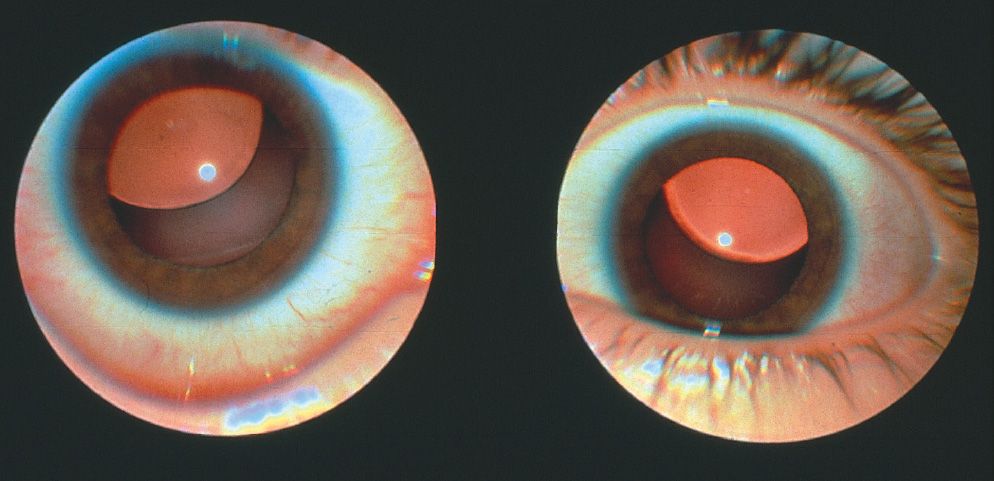
A) Long, spider-like fingers
B) Non–progressive lens subluxation
C) Low risk of retinal detachment
D) Abnormality in fibrillin
15 Which of the following would be the most appropriate initial management in the patient in Figure 11-8?
A) Immediate surgical removal of the lens
B) Spectacle or contact lens correction of the refractive error
C) No treatment because there is only a low risk of amblyopia
D) Pilocarpine to constrict the pupil
16 An infant presents with the appearance shown in Figure 11-9. The following are all characteristics of the condition shown except:
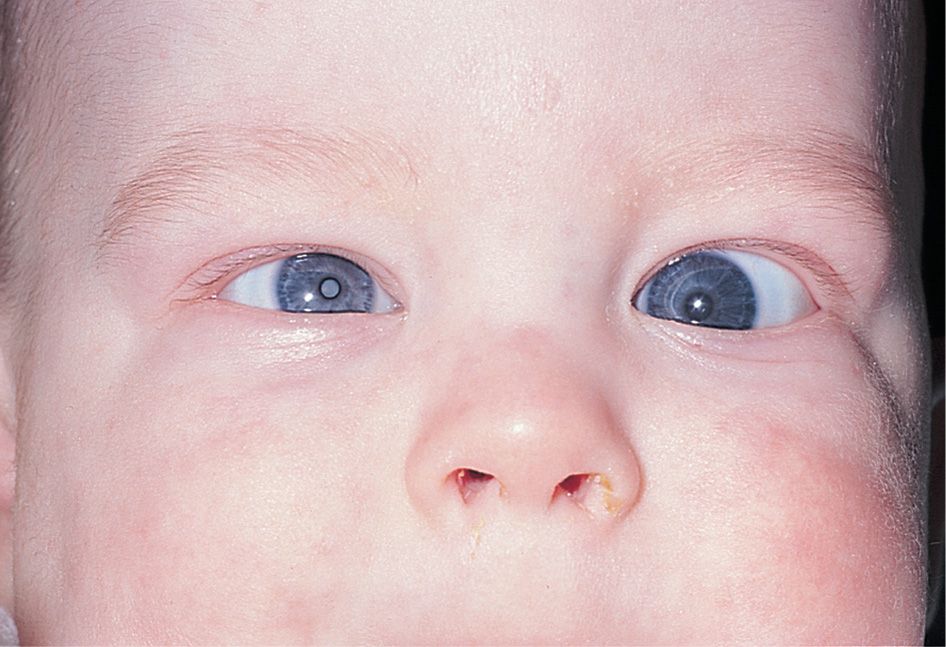
FIGURE 11-9 From Tasman W, Jaeger E. The Wills Eye Hospital Atlas of Clinical Ophthalmology. Second Edition. Lippincott Williams & Wilkins, 2001.
A) prone to angle-closure glaucoma
B) progressive cataract formation
C) unilateral process
D) autosomal dominant inheritance
17 Differential diagnosis of the patient in Figure 11-9 includes all of the following except:
A) retinoblastoma
B) retinopathy of prematurity
C) homocystinuria
D) Coats disease
18 A 6-month-old infant presents with a unilateral, complete cataract OD. There is no family history of eye disease. Which would be most helpful in determining the etiology?
A) TORCH (toxoplasmosis, other agents, rubella, cytomegalovirus, herpes simplex) titers and syphilis serology
B) B-scan ultrasonography
C) Chromosomal analysis
D) Urine protein and reducing substances
19 Regarding age-related cataracts, which is correct concerning the following histopathologic changes?
A) Posterior subcapsular cataract—morgagnian globules
B) Cortical cataracts—Wedl (bladder) cells
C) Nuclear sclerotic cataracts—homogenous, loss of cellular laminations
D) Elschnig pearls—proliferation of lens capsule
20 A 15-year-old boy presents with bilateral, symmetric findings. His left eye is pictured in Figure 11-10. He is tall with blond hair. Both of his parents appear normal. Which of the following is least likely to be found in this patient?

A) Mental retardation
B) Osteoporosis
C) Decreased serum levels of methionine
D) Increased thromboembolism with surgery and general anesthesia
21 Which would be appropriate therapy for this patient (Fig. 11-10)?
A) Vitamin A
B) Coenzyme Q
C) Vitamin B6
D) Low phenylalanine diet
22 Which of the following concerning polar cataracts is correct?
A) Anterior polar cataracts usually cause more visual disturbance than posterior polar cataracts.
B) Posterior polar cataracts have been associated with remnants of the tunica vasculosa lentis.
C) Both anterior and posterior polar cataracts can be sporadic or recessively inherited.
D) Posterior polar cataracts invariably progress to complete cataracts.
23 Complications during or after cataract surgery in the patient shown in Figure 11-11 will most likely be due to:

A) severe postoperative inflammation
B) zonular dehiscence
C) corneal decompensation
D) retention of viscoelastic
24 In which of the following individuals is this most typically found?
A) Young, myopic males
B) Men with type-A personality
C) Women with tall, thin stature
D) Elderly, Caucasian women
25 A dispersive ophthalmic viscosurgical device (OVD) used in phacoemulsification has which of the following properties?
A) Adheres to and protects endothelium from damage
B) Easy to remove at the end of case
C) Retained viscoelastic does not cause an increase in IOP postoperatively
D) Prevents collapse of the anterior chamber during high vacuum
26 During a complicated cataract removal case, the lens and capsular bag were both removed and an anterior chamber lens was placed. The first day postoperatively, the IOP is 50 mm Hg and the iris is bowed forward around the intraocular lens (IOL). Which of the following measures would be most effective?
A) Topical glaucoma medications and close observation
B) Laser peripheral iridectomy
C) Increased frequency of the topical steroid
D) Paracentesis to release aqueous fluid
27 A patient has with-the-rule astigmatism. During uncomplicated cataract surgery, a one-piece toric PCIOL is placed into the capsular bag and aligned with the astigmatism. The day following surgery, the lens appears to have rotated 90°. Which of the following statements is most accurate?
A) Lens explantation is necessary because the lens is not stable.
B) The measured astigmatism has increased.
C) The lens should have been placed in the ciliary sulcus.
D) Rotation of the lens can be done anytime after the first 3 months.
QUESTIONS 28 and 29 A 1-week-old baby is noted by the pediatrician to have an abnormal red reflex of both eyes. His right eye is shown in Figure 11-12. The left eye has a similar appearance. Both eyes are otherwise normal.
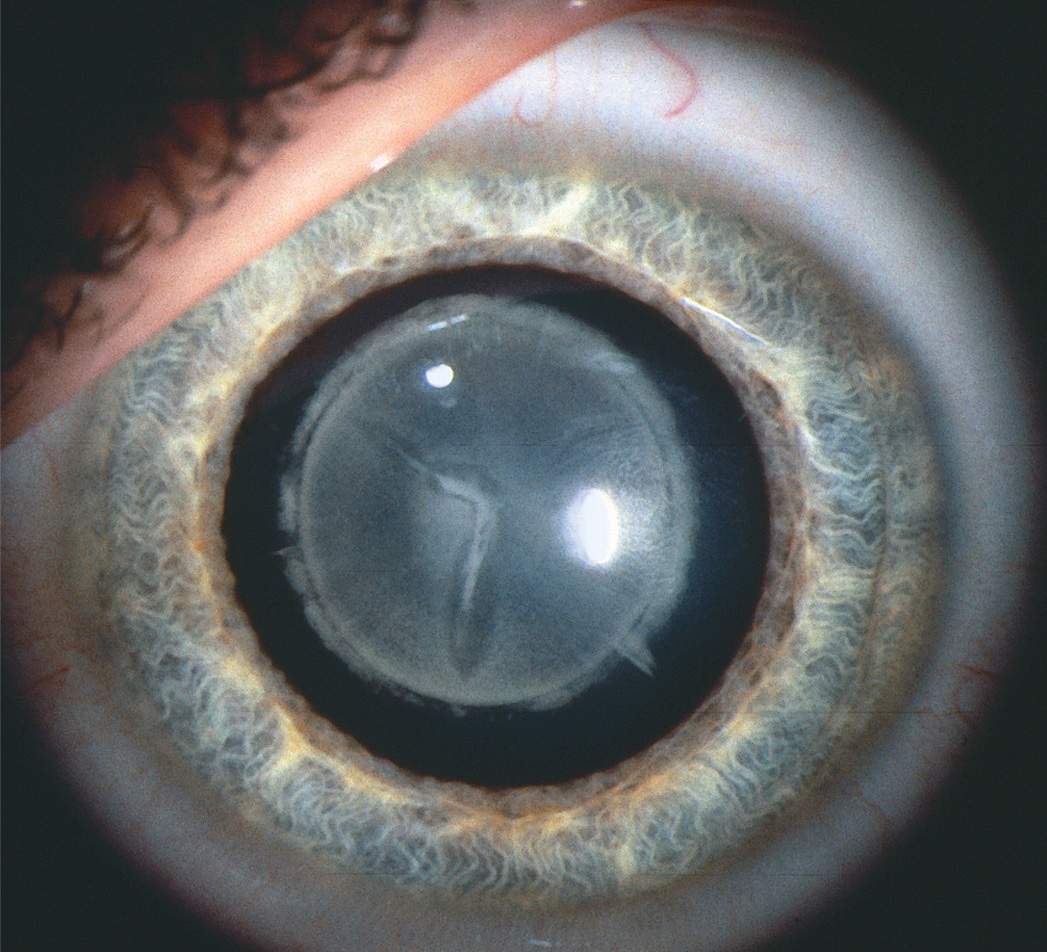
28 Which of the following may be the most appropriate therapy for this infant?
A) Patch the eye that best fixes and follows and perform surgery on the other eye.
B) Perform surgery on one eye as soon as possible and the other eye after 3 months of age.
C)
Stay updated, free articles. Join our Telegram channel

Full access? Get Clinical Tree


